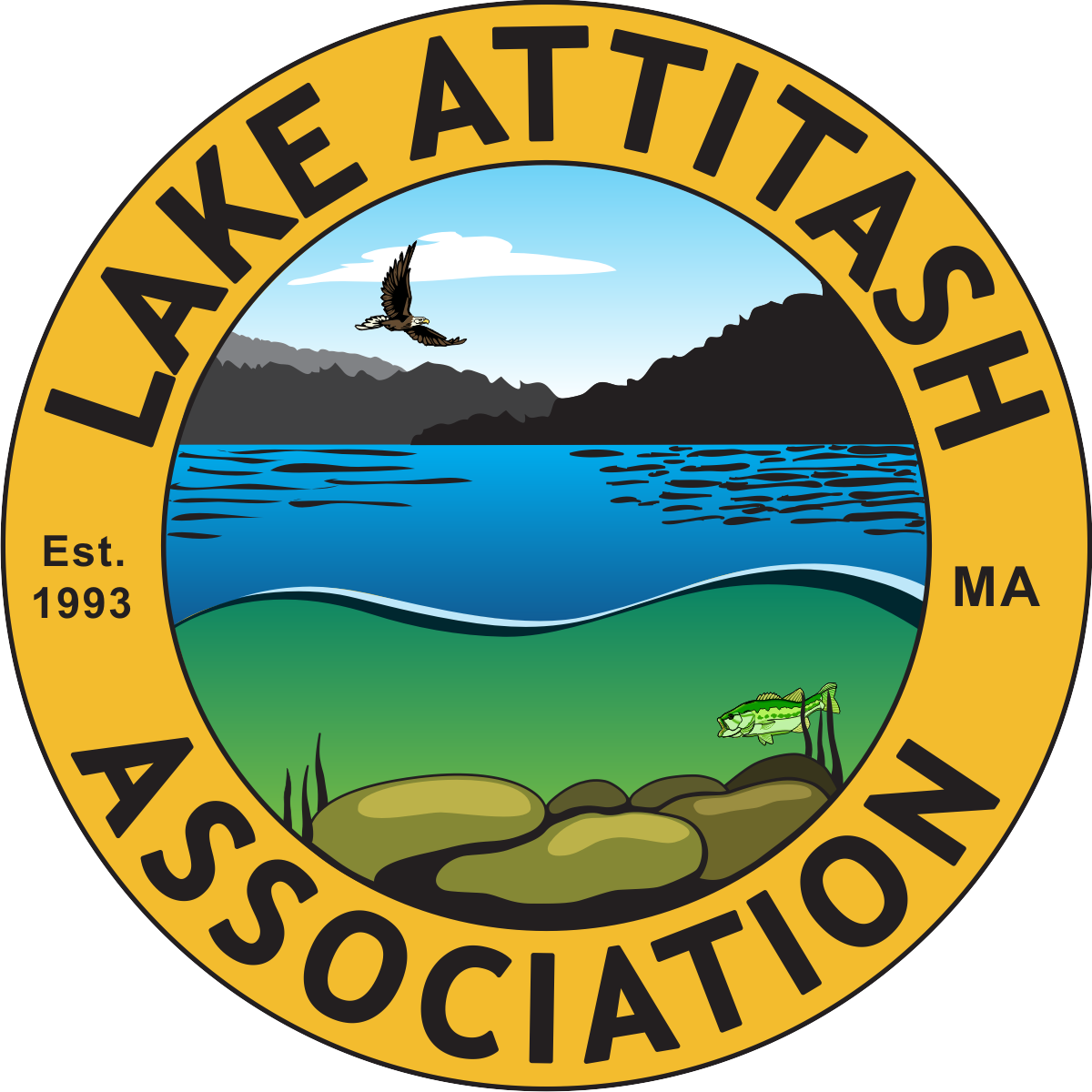Protecting the Lake: Fertilizers and Lawn Care

Let’s get serious!
No fertilizer of any sort can be applied within 100’ of Lake Attitash as it used as a secondary water supply for Amesbury’s drinking water.
Fertilizer use in the watershed is serious business! You need to know about the law! If you want to continue to see cleaner water in Lake Attitash, remember that Phosphorus is public enemy #1.

There is a law in Massachusetts restricting the use of fertilizers containing Phosphorous on all non-agricultural turf or lawns in order to protect our waterways. We and our lawn care services are required by law to comply with this law. (“An Act Relative to the Regulation of Plant Nutrients” 330 CMR 31.00)
Details about this law are available at: Plant Nutrient Management | Mass.gov
And at: https://www.mass.gov/service-details/fertilizer-facts
Here are some of the restrictions in the new law:
- Fertilizer containing Phosphorous can only be applied when a soil test has indicated that it is necessary OR when a new lawn is being established, patched or renovated
- No fertilizer of any sort can be applied between December 1 and March 1 to frozen or snow covered soil, to saturated soil, or soils that frequently flood, or to soil within 20’ of a water supply well or within 100’ of surface water that is used for public drinking water supply.
- Any plant nutrient / fertilizer applied shall not exceed UMass guidelines for plant nutrient application rates to turf.
- Soil tests for nutrient analysis shall be obtained from the UMass Extension Soil Testing Lab or a laboratory using methods and procedures recommended by UMass. Soil tests are valid for three years.
Why all the restrictions?
This is a photograph of a very high concentration of blue/green algae – cyanobacteria. This is known as a hazardous algal bloom. This water is dangerous to the health of animals and humans.

- Stormwater carries nutrients from fertilizer use, pet waste, faulty septic systems and other sources into our lakes and waterways. An abundance of Nitrogen and Phosphorous in the water acts like fertilizer and creates excessive growth of weeds and algae. The blue-green algae / cyanobacteria blooms that used to occur frequently in Lake Attitash are a significant health hazard to people and to animals and are caused by excessive amounts of nutrients in the water and the sediment.
- Algae are relatively short lived; when they decay, algae consume the available oxygen in the water. This can lead to a die-off of fish and animals, cause the water to become murky and odorous, and limit recreational activities.
- TOO MANY NUTRIENTS IN THE WATER CAN RESULT IN ALGAL BLOOMS, WHICH CAN BE TOXIC TO HUMANS AND ANIMALS
What we can do to take care of our lawns and protect the lake from excess nutrients flowing into the lake from our land?
If you must have a lawn…
- Get your soil tested. Put your lawn on a diet. Feed it only when it is necessary according to the test results. UMass Extension offers low cost soil testing – visit the following website for more information: Services: Soil and Plant Nutrient Testing Laboratory | Center for Agriculture, Food, and the Environment at UMass Amherst
- If you use a lawn care service insist that they test your soil before any applications are made.
- Use No Phosphorus fertilizer (see below)
- Do not apply fertilizer before heavy rainfal
- Minimize fertilizer use on slopes
- Use a mulching mower. This reduces the need for fertilizer on your lawn by one-half.
- Use native plants as they thrive without fertilizer.
- Don’t overwater your lawn. Consider using a timer or put out an empty tuna can – when it’s full you can stop watering.
- Use organic mulch whenever possible.
- Compost or mulch yard waste. Don’t leave it in the street or sweep it into storm drains or streams.
- Cover piles of dirt or mulch being used to landscaping projects.
- GO Natural! Leave an un-mowed area or create a buffer garden, – a strip of natural or unfertilized vegetation between your lawn and the shoreline. This prevents erosion and helps absorb any excess nutrients before they enter the lake. (Go to Article #6 Buffer Gardens for more how-to information)
- Cover piles of dirt or mulch being used in landscaping projects.
How do I find the right fertilizer?
All fertilizer labels have three bold numbers. These three numbers represent the primary nutrients (Nitrogen (N) – Phosphorous(P) – Potassium(K)).

You can find No-Phosphorous Fertilizer at Home Depot and Lowes and other garden supply stores!
